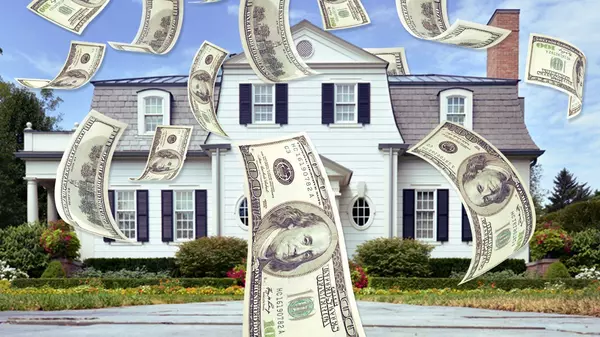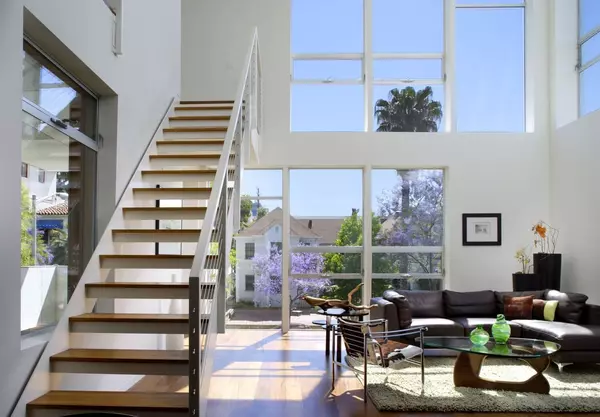Alaska Is Struggling in Affordability and Homebuilding: Can Gov. Dunleavy Jumpstart Construction?

Alaska’s housing market is facing a cold reality: high prices, limited supply, and slow construction.
The state earned a C- on the Realtor.com® State-by-State Housing Report Card, part of the Let America Build campaign that measures how states balance affordability and homebuilding.
But regardless of a state's rating, this is a national problem. Hoping to spur on action, President Donald Trump recently put pressure on large homebuilders to increase construction nationwide. In a post on his Truth Social platform in early October, he accused major builders of hoarding lots to prop up prices—likening them to OPEC, which restricts oil output to maintain high prices.
“They’re my friends ... but now, they can get Financing, and they have to start building Homes. They’re sitting on 2 Million empty lots, A RECORD,” Trump wrote. He urged Fannie Mae and Freddie Mac to intervene and “get Big Homebuilders going” to “restore the American Dream.”
Given both the national challenges and the recent devastation in the state, will building in remote areas around the state become that much more out of reach?
A tight market with little new supply
Alaska posted a total score of 40.4, putting it just above the national failing range. The state’s median listing price reached $417,738 in 2024, while the median household income stood at $86,275. That gives Alaska a Realtor Affordability Score of 0.73—decent compared with other coastal states, but still well below what’s needed for most buyers to comfortably afford a home.
New construction remains Alaska’s biggest weak spot. The state accounted for just 0.1% of all new housing permits in 2024, despite representing 0.2% of the U.S. population. That yields a permit-to-population ratio of 0.5—among the lowest in the country.
The new construction premium, or the price difference between new and existing homes, came in at 30.3%, suggesting that when new homes are built, they tend to be expensive and aimed at higher-end buyers.
How Alaska compares nationally
According to the most recent Realtor.com New Construction Insights, new construction is providing relief for buyers in much of the country. Nationwide, the median listing price for new homes was $450,797, barely up 0.7% from a year ago, while resale prices climbed 2.4%. That pushed the national new construction premium down to 7.8%, the lowest level ever recorded.
“America is short more than 4.7 million homes, and every new home built helps close that gap while fueling local economies," says Shannon McGahn, executive vice president and chief advocacy officer at the National Association of Realtors®.
"NAR research shows that the U.S. has faced a persistent housing shortage for more than a decade, driving up prices and limiting options for buyers. Expanding housing supply creates jobs, supports small businesses, and affords families the opportunity to build generational wealth.”
In the South and West, builders have managed to deliver more inventory at lower price points, helping to stabilize markets. But Alaska’s construction environment is shaped by unique hurdles—harsh weather, limited road access, and high transportation costs for materials—all of which slow projects and drive up prices. The state’s low permit levels underscore how difficult it remains to add new housing at scale.
Realtor.com data shows that the Midwest and South dominate the nation’s top housing grades, thanks to stronger affordability and more permissive zoning. By contrast, the West and Northeast—regions that include Alaska and states like Washington and Oregon—continue to struggle under higher costs and limited housing stock.
Governor Dunleavy’s push for housing reform
Governor Mike Dunleavy has acknowledged Alaska’s housing shortfall and has begun promoting initiatives aimed at boosting development.
In April 2025, he signed Senate Bill 199, which expands funding for the Alaska Housing Finance Corporation (AHFC) to partner with local governments on new housing projects. The initiative allocated $7 million toward a New Home Construction Rebate to be managed by the AHFC.
With the goal of increasing housing opportunities and housing inventory for Alaskans statewide, AHFC’s New Home Construction Rebate could support the construction of approximately 650 new homes, according to their website.
The bill prioritizes infrastructure in growing regional hubs like Anchorage, Fairbanks, and the Matanuska-Susitna Valley, where housing shortages are most acute.
“This rebate specifically targets the undersupply of new homes throughout Alaska and is a significant step aimed at jumpstarting new construction statewide,” said Bryan Butcher, CEO/executive director, AHFC. “This is a terrific opportunity to upgrade new inventory with innovative designs while simultaneously increasing the availability of more energy efficient homes.”
The AHFC is also currently connecting Alaskans with organizations working to assist families displaced by the recent tragedy.
In October 2025, dozens of communities in Western Alaska were completely wiped out by Typhoon Halong. Among the hardest-hit locales are Kipnuk and Kwigillingok, small Alaska Native villages several hundred miles southwest of Anchorage.
“Every effort will be made to help those hit by this storm. Help is on the way,” Gov. Mike Dunleavy wrote in a Facebook post on Oct. 12.
Part of the effort to help will be in the rebuilding processes. The state Department of Transportation estimates that 90% of the structures in the community were destroyed, including most of the homes, some of which were literally lifted from their foundations by flood waters and pushed miles away.
This article was produced with editorial input from Dina Sartore-Bodo and Gabriella Iannetta.
Categories
Recent Posts











"My job is to find and attract mastery-based agents to the office, protect the culture, and make sure everyone is happy! "
